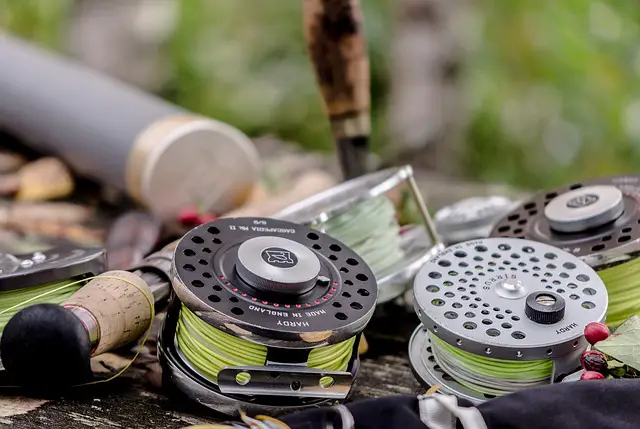Fly fishing is an ancient technique that has been adapted and innovated over the centuries. It now represents a specialized branch of the sport that requires a particular set of tools, skills, and knowledge. It serves not only as a means of catching fish but also as an art form. The central elements to this technique are, without a doubt, the fly fishing rod and reel.
The Role of the Fly Fishing Rod
The fly fishing rod is an essential tool in the arsenal of a fly fisherman. It is specially designed for casting the fly line and handling the fish once hooked.
Design and Material
Fly fishing rods are typically constructed from high-tech materials such as fiberglass, graphite, or bamboo. They vary in length, typically between 7 to 9 feet, depending on your fishing conditions and target species.
How to Choose a Fly Fishing Rod
Choosing the right fly fishing rod is crucial to your experience on the water. The right rod should match the weight of the line you plan on using. A rod designed for a heavier line will not cast effectively with a lighter line, and vice versa. Furthermore, the length of the rod depends on the type of water you’ll be fishing in; shorter rods are ideal for small streams while longer rods are better for big rivers and lakes.
The Role of the Fly Fishing Reel
The fly fishing reel complements the rod by holding the line and helping to balance the rod. It also provides a drag system for fighting fish.
Different Types of Fly Fishing Reels
Fly fishing reels come in three main types: single action, multiplier, and automatic. Single-action reels have a 1:1 retrieve ratio, meaning one turn of the handle equals one turn of the spool. Multiplier reels feature a higher retrieve ratio, while automatic reels use a spring tension mechanism to automatically retrieve the line.
What to Consider When Buying a Fly Fishing Reel
When choosing a reel, consider the type of fishing you’ll be doing. For instance, if you’ll be fishing for smaller species, a small, lightweight reel is appropriate. On the other hand, fishing for larger species will require a reel with a good drag system to handle the fight. The reel should also balance well with your chosen rod and line weight.
How Does the Fly Fishing Rod and Reel Work Together?
The synergy between the fly fishing rod and reel is paramount for successful fly fishing. The rod provides the power to cast the line, while the reel holds the line and controls the drag when fighting a fish. Together, they allow the angler to accurately cast the fly, set the hook, and land the fish.
Fly Casting Techniques
Proper casting techniques are crucial to fly fishing, and this requires a harmonious action between the rod and reel. The most common casting technique is the overhead cast, but other methods like roll cast, side cast, and spey cast are also used depending on the fishing conditions.
Fly fishing is indeed an art that requires patience, practice, and the right equipment. Choosing the appropriate fly fishing rod and reel can greatly enhance your experience on the water. Remember, the key is to have your rod and reel balance well with each other and with your line weight. Happy fishing!




